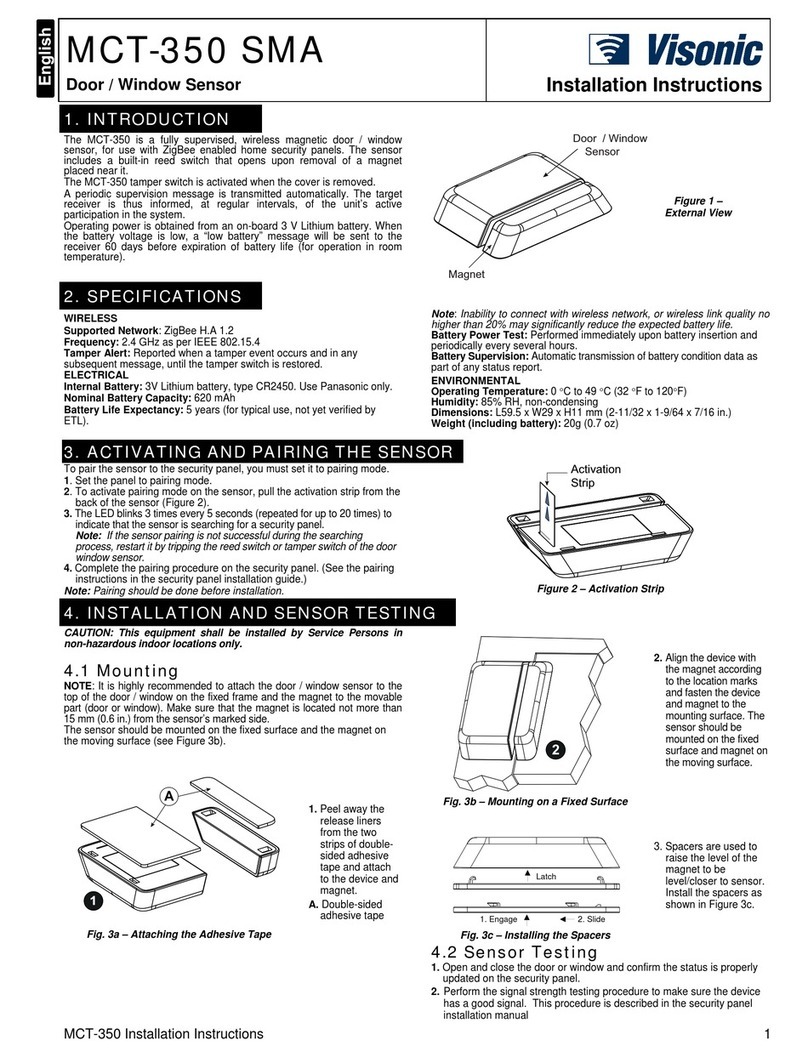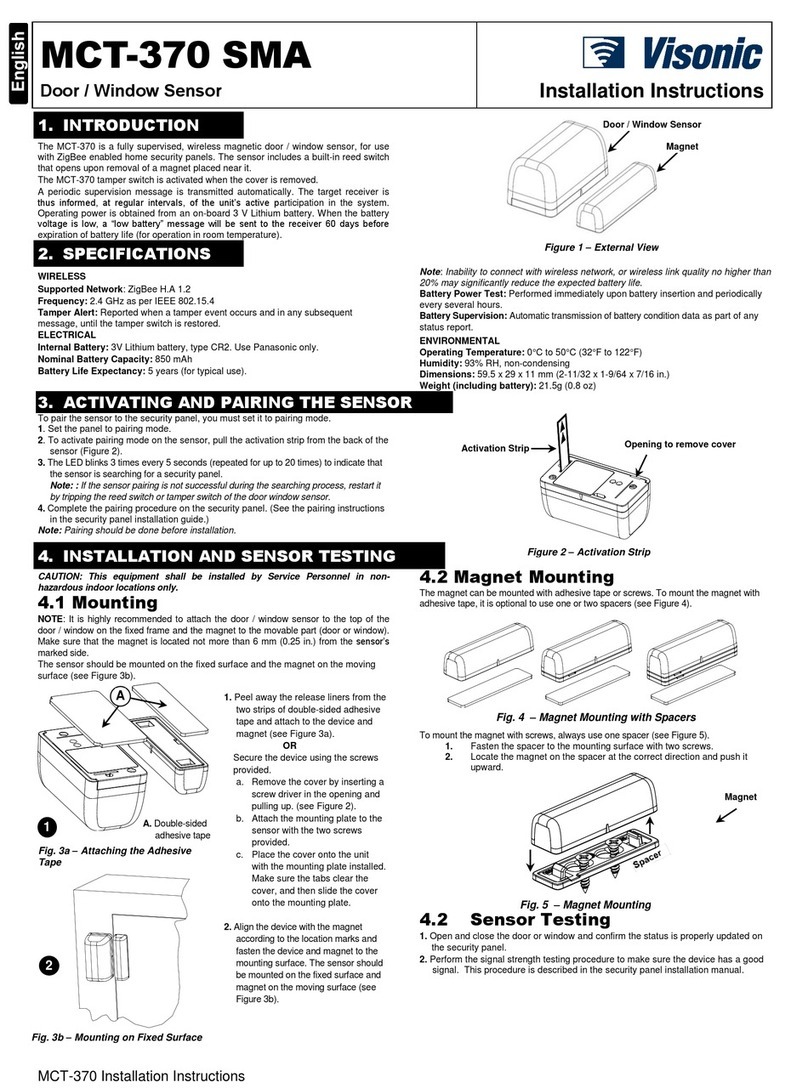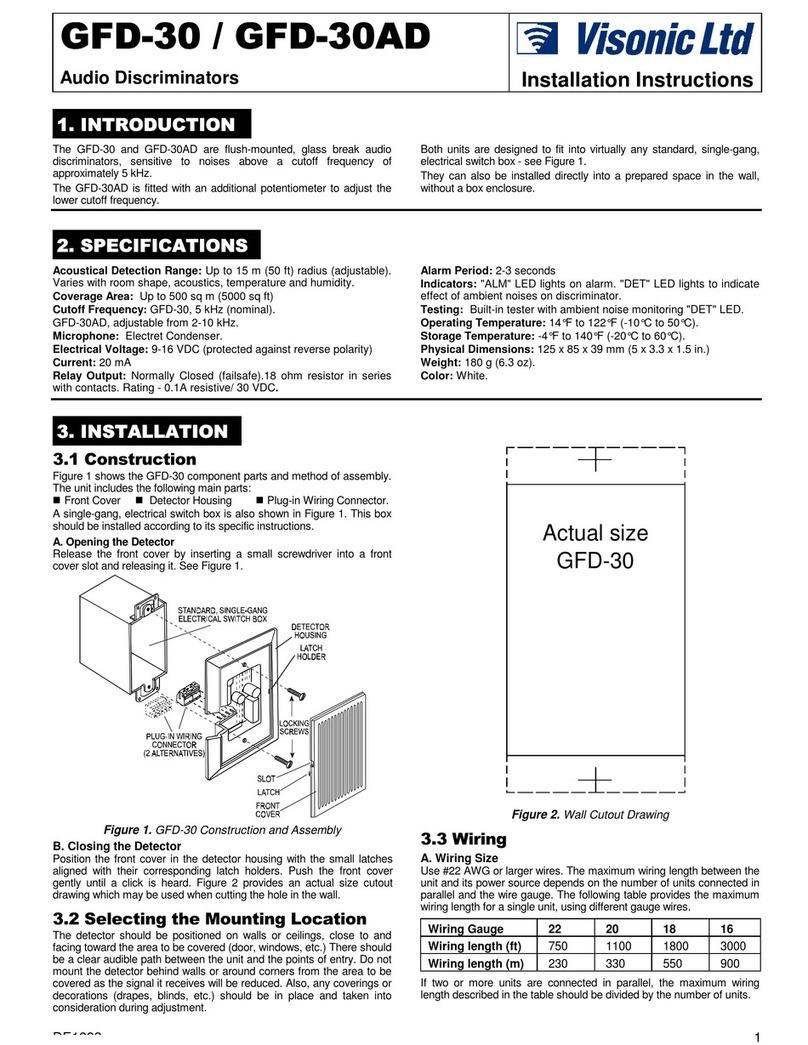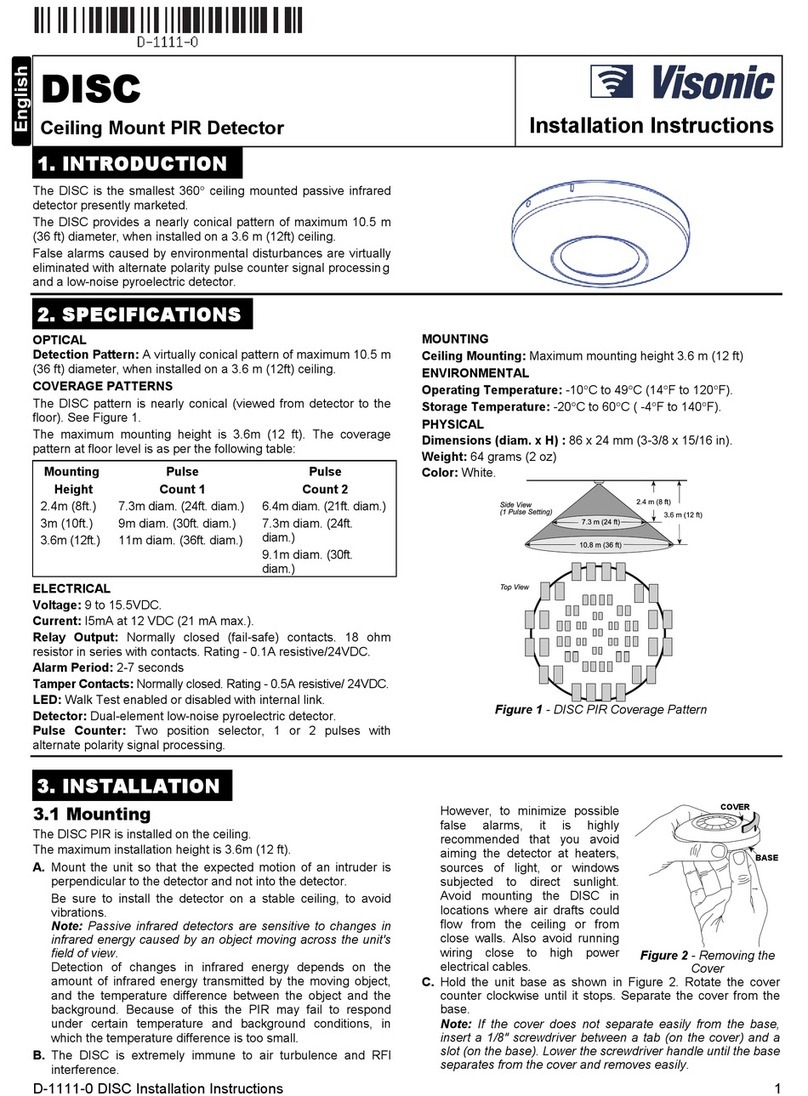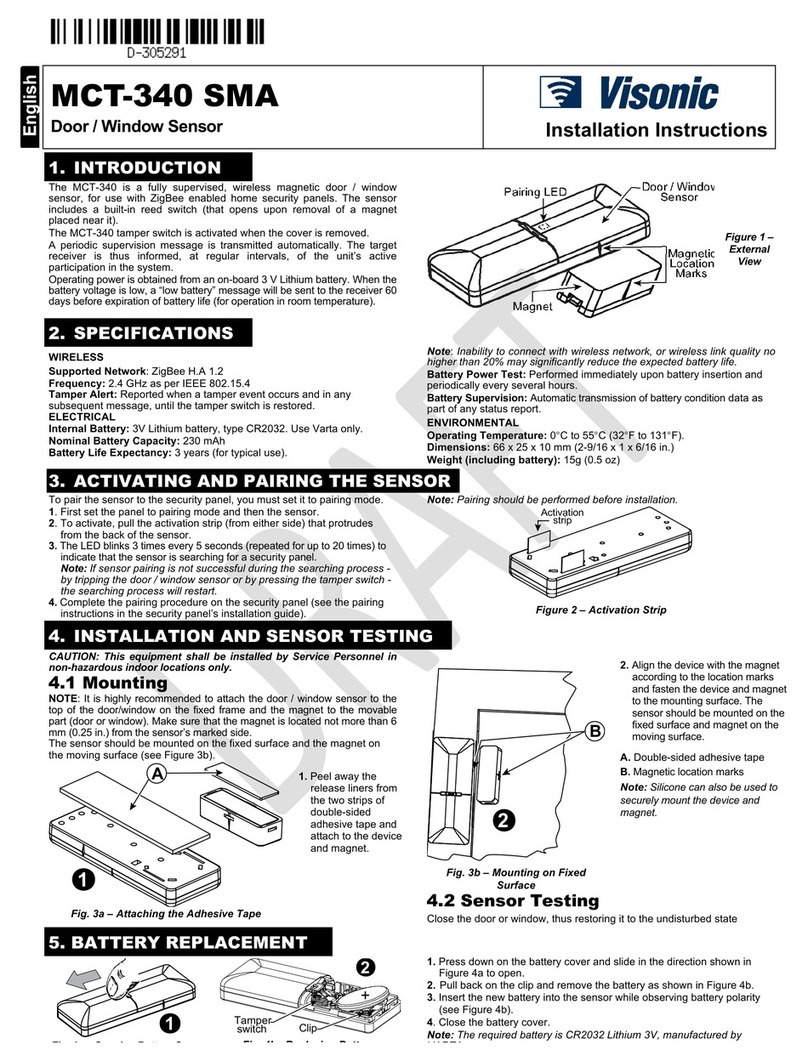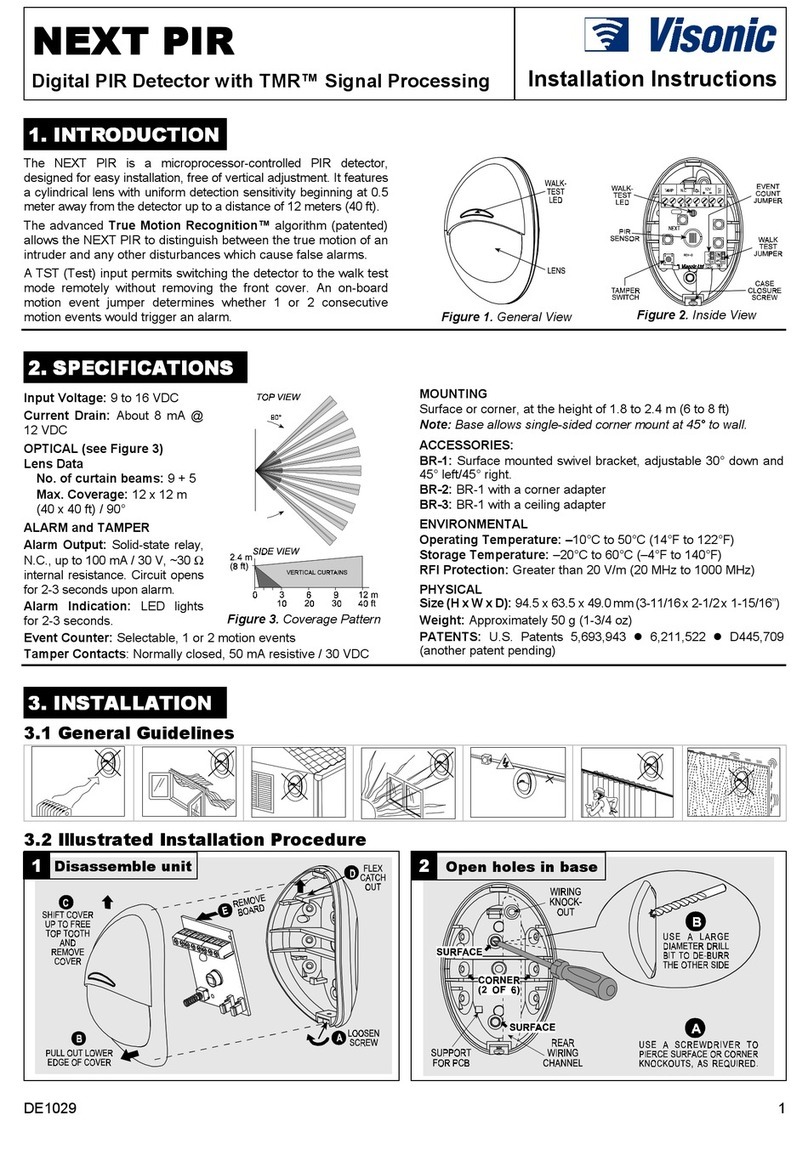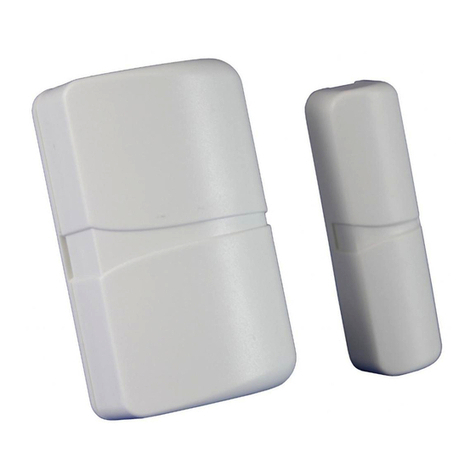SMD-426, SMD-427
8 D-302758
SMOKE SENSORS (SMD-426, SMD-427)
Supervised Wireless PowerG Smoke / Heat and Smoke Detector
1. DESCRIPTION AND APPLICATIONS
SMD-426 (smoke detector) and SMD-427 (heat and
smoke detector) are automatic fire detectors with integral
audible signal for open area protection, designed to sense
heat or smoke (not flame) and fitted with a PowerG type
UHF transceiver.
SMD-426 / SMD-427 provides early warning of developing
fire by sounding an alarm with its built-in alarm horn, and
by transmitting a coded alarm signal to a PowerG receiver
or to a compatible wireless alarm control panel.
SMD-427 will activate a fire alarm upon either smoke or
heat (temperature rate-of-rise) condition. With two fire
sensors (heat and smoke), the SMD-427 detector may
shorten the time to fire alarm activation.
It must be borne in mind, though that effective prewarning
of fire accidents is only possible if the detector is located,
installed and maintained as described here.
In alarm condition, the buzzer sound can be stopped for 12
minutes by pressing the TEST/MUTE switch. It will not
restore the alarm condition, but will temporarily silence the
buzzer while you correct the condition. After 12 minutes, the
detector restarts the alarm buzzer sound.
Note: The TEST/MUTE switch functions as TEST switch
(in normal operation) or as MUTE switch (in alarm
condition).
The tamper switch actuator (Fig. 3) is pressed against the
bracket when the unit is attached to the bracket. Removal of
the unit from the bracket causes the switch contacts to open,
creating a tamper event, which is reported by the transceiver
to the alarm system control panel.
BUZZER
HOLE TEST / MUTE
BUTTON
&
LEDS
Figure 1. General View (SMD-427)
2. SPECIFICATIONS
SMOKE DETECTOR
Alarm Sound Level: 85 dB at 3 m (10 feet)
WIRELESS
Frequency Band (MHz): 433, 868, USA: 915
Modulation: GFSK 50kbs, 25 kHz deviation
Tamper Alerts: Tamper event (removal of the unit from its
bracket) is reported once. Tamper restore is reported when
the tamper switch is restored.
ALARM REPORT:
In the alarm condition, the detector sends the alarm event
to the control panel. When the alarm condition is restored,
the detector sends an alarm restore event to the control
panel and sets the alarm restore indication (red LED blinks
once per sec.)
Note: The alarm restore indication can be cleared via the
control panel only.
ELECTRICAL DATA
Power Source: 3 Volt CR123A / CR17450 lithium.
Operation Voltage: From 2.7 V to 3 V.
Current Drain: 18 µA standby, 70 mA max. in operation
Smoke Density:
Europe: 0.09 – 0.14 dB/m
USA: 1.44%/ft to 2.74%/ft
Cover Range: 50 – 100 cubic meters (1770 – 3530 cubic ft.)
Battery Supervision: Automatic transmission of battery
status data as part of any transmitted message.
Battery Life Expectancy: 5 years for CR123A, 8 years for
CR17450.
Audible and Visual Low Battery Warning: Built-in horn
beeps every 30 seconds simultaneously with red LED
flashing (for up to 30 days when the battery voltage drops).
Caution! Risk of explosion if battery is replaced by an
incorrect type. Dispose of used batteries according to the
manufacturer's instructions.
Audible and Visual Degraded Chamber Sensitivity
Warning: Built-in horn beeps every 30 seconds in the
middle of red LED flashing intervals – indicates that the
detector must be replaced.
Clean Warning Transmission: A clean (maintenance)
signal is transmitted when the detector's chamber becomes
stained, causing the detector to operate at high sensitivity.
PHYSICAL DATA
Operating Temperature: -10°C to 50°C (14°F to 122°F).
Relative Humidity: 10% to 85%
Dimensions: SMD-426 120 mm (4.7") x 58 mm (2.3")
SMD-427 120 mm (4.7") x 63 mm (2.5")
Weight (including battery): 165 g (5.8 oz)
Compliance with Standard:
EN54-7, EN 14604. EN 54-5, EN 60950, EN 300220,
EN 301489,
USA: (FCC) CFR47 Part 15
Canada: RSS210
Designed to comply with: UL 268
3. INSTALLATION
3.1 Disassembly
Separate the unit from its mounting bracket as shown in
Figure 2.
BRACKET DETECTOR
1
Hold the
bracket with
one hand
2
Rotate the
detector
anticlockwise
and pull it from
the bracket
Figure 2. Separating the Detector from Its Bracket
